If you’re building an emergency fund, you’ll want to set some savings goals based on the five-category examples in this article. We’ll give you emergency fund examples, amounts and categories.
If you’re managing a budget and have extra money available each month, you’ll want to take note of our emergency fund examples.
We took several years to accumulate our 5 category Emergency Fund Savings account. We’ll tell you what the categories are, how much we saved and where we keep it (it’s in a special high-yield bank account).
We’d love your input on our Medical Coverage Poll below – if you have 10 seconds could you answer our 1-question poll?
TABLE OF CONTENTS
- 1 How To Be Prepared for Emergencies
- 2 5 Emergency Funds Account Examples
- 3 Category 1: Emergency Medical Savings
- 4 Category 2: House Damage/Deductible Savings
- 5 Category 3: Emergency Travel
- 6 Category 4: Unemployment Emergency Fund
- 7 Category 5: Car Replacement Fund
- 8 The Family Emergency Binder
- 9 Emergency Funds Amounts Totaled Up
- 10 Where to Keep Your Emergency Fund Savings
- 11 Live Video: Emergency Fund Real Examples
We’ve written several articles detailing the budgeting system we use. If you’re already using a money management system, you can skip the next Budgeting Blogs list and get right to the Emergency Fund Examples below.
Read the entire Budget Series Here
- Six obstacles to the perfect budget
- How to Make the Best Budgets for Savvy Spending
- The Amazing Key to the Most Powerful Household Budget Ever!
- How to Build Confidence with a Written Budget
- Member Archive: Money Management Tools Part 1, Part 2, Q&A)
If you’ve got the budgeting principles down then you are probably saving in advance for all your living expenses. And you probably have a good chunk of change sitting in your household budget so you might feel pretty secure.
How To Be Prepared for Emergencies
We don’t want to sound pessimistic and tell you that disaster is around the corner. But in today’s economy, financial catastrophes are lurking in the shadows for the unprepared. If you are prepared, then these financial emergencies will cause some maneuvering, but will not pull the financial rug out from under you.
Like a good Boy Scout, you’ve got to “be prepared.” So let’s talk about building an emergency fund, in addition to your household budget.
5 Emergency Funds Account Examples
Unless you’ve got a rich uncle who just left you a large inheritance, building an emergency fund is going to take some time. It took us more than five years to complete ours because we were paying off our first house at the same time.
It is absolutely essential that you keep working on your household budget, living below your means and avoiding credit to accomplish this task. We have five sub-accounts in our emergency fund. These are different from the accounts in our household budget. We’ll explain the value of each one.
RELATED ARTICLE: Athletes Living Well Below Their Means
Category 1: Emergency Medical Savings
In our household budget, we have two accounts for medical expenses. Medical Insurance for paying monthly premiums and Medical Expenses for the monthly costs related to routine doctor visits, medication, and vitamins (we like Puritan’s Pride).
However, should there be a real medical emergency, and one of us was hospitalized for a period of time, we would need additional resources.
Our medical insurance offers our first line of protection. If you don’t have it, get it. Some of our readers live in countries with socialized medicine, and procuring insurance isn’t an issue.
But if you live in the U.S., you must make acquiring medical insurance a top priority. Even if you can afford only catastrophic coverage, which provides just hospitalization with a very high deductible, do it now.
Five Options for Medical Insurance
If you have health issues and are finding it hard to afford insurance.
1) Temporary Insurance: Find a temporary insurance policy (use EHealthInsurance.com to find one) to cover you while you work on cleaning up your health history by getting healthy.
2) Work with Benefits: Take a job with a large company that provides non-qualifying medical coverage and then get healthy if possible. Usually, larger corporations and local, state and federal agencies provide this type of medical coverage.
Some companies offer medical coverage for employees who work 20 hours per week, so it might be worth your while to check it out. We have several friends who work part-time at Starbucks to get the medical benefits covered.
3) State Assistance: If your income is low, check your state health department for insurance they might offer.
4) Affordable Care Act: Based on your income the U.S. Government will underwrite a portion of the majority of your health insurance premiums. The sign-up process is complicated, but there are local guides who can help you. Visit LocalHelp.HealthCare.gov.
5) Health Care Sharing Ministries: There are several privately operated groups (some are religious-oriented) that pool the money of individuals to help them pay for medical care. They cost much less per month than insurance but do have many restrictions.
Learn more about HealthShare Plans.
Learn about the Top Health Insurance Companies here
1.1 What Type of Medical Coverage Do You Have [Poll]
How Much Should You Save for Emergency Medical?

Calculate your financial goal for the emergency medical savings based on your insurance coverage.
- Take the deductible and multiply it times the number of people required (usually two in a family group).
- Then add the co-insurance percentage based on the maximum deductible.
- So, if your deductible is $5,000 and you have a maximum of two for your family, you’ll need to save $10,000 plus the co-insurance percentage.
- If your co-insurance is 80 / 20, you’ll need another $2000. Know what your policy includes, read the handbook from cover to cover, and ask lots of questions. If you aren’t sent a printed handbook, then ask the medical insurance company where you can get a pdf, and print it out, or have it printed out.
- With the scenario listed here, your Medical Emergency Account Target would be $12,000.
If your employer provides a Health Savings Account (HSA), you can accumulate your money tax-free. Then you can build the amount from one year to the next. There are also FSA’s but those have different rules than HSA’s. Consult with your benefits department for more details.
Calculating your emergency medical fund need may take you a few hours.
But even if your calculation is off a little bit, you’re still ahead if you have some money saved. For more details on dealing with medical insurance, read our member-only archive article, “Navigating the Medical Maze.”
Category 2: House Damage/Deductible Savings
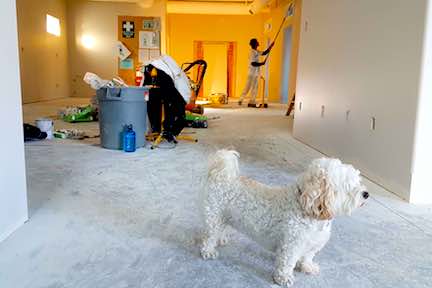
Many financial experts recommend that homeowners have at least one percent of the value of their home saved for emergencies. This money is used if you need to replace a major appliance like a refrigerator, air-conditioning unit, or furnace, or to repair your roof or some other part of your house. This becomes a supplement to your homeowner’s insurance.
Unfortunately, with recent disasters (hurricanes, water damage/mold, and lawsuits) homeowner’s insurance companies are not only raising rates but also are becoming increasingly selective about whom they will insure.
Having money saved to take care of minor emergencies allows you to carry a higher deductible and put in fewer claims. The end result will be lower insurance premiums and fewer rate increases. If you haven’t quoted your homeowner’s insurance in a while it’s time. This NerdWallet article describes and rates more than 20 of the top insurance companies in the U.S.
Recommended Home Emergency Funds Based on House Value:
- $100,000 house value – have a minimum of a $1000 emergency fund
- $200,000 house value – have a minimum of a $2000 emergency fund
- $300,000 house value – have a minimum of a $3000 emergency fund
- $400,000 house value – have a minimum of a $4000 emergency fund
Category 3: Emergency Travel

This account is to be used in case of a family emergency. Steve’s dad and most of his siblings live in the Midwest. So this money allows us to fly out of town on short notice. This way we can be present if there is a serious illness or accident.
We originally based the figure on $500 per person times seven of us and came up with $3500. But now that the kids are grown, we have moved much of this money into other savings categories. We currently keep $1500 in our Emergency Travel Fund.
This account did get to be used when Steve’s mom was very ill and dying. We were so grateful we had this. There was no stress about flying all of us out to say our goodbyes. If you’re wondering, all of Annette’s immediate family lives locally, so we don’t have to set aside money to see them!
To get the best prices on airfare, we always research several sources:
- Southwest Airlines
- American
- Cheap-o-Air (they give us lots of options)
If your family includes 4 members who would fly to see family in an emergency, and the average airfare for last-minute flights was $500 your emergency fund would need to have $2000 to $4000 in your emergency fund (factoring in car rental and lodging).
RELATED ARTICLE: Rental Car Hacks
Category 4: Unemployment Emergency Fund

Many financial “gurus” recommend having three- to six months’ of living expenses saved in case of a financial emergency, disability or unemployment. With the economy so uncertain, having this account funded is a better idea now than ever before.
Building this account took the longest of them all. Because we have kept our overhead low, the amount was large, but not insurmountable. We calculated our monthly need excluding some of the “luxury” items on which we currently spend money. It was this very account that allowed us to start our own publishing business in 2003 when Steve’s job evaporated for the third time in three years.
Who is Fat Freddie?
Another advantage of having an emergency unemployment fund is that you are free from employer coercion. At a seminar Steve attended in 1985, a 72-year-old gentleman spoke about working for various employers. This man had built an emergency fund and referred to it as “Fat Freddie’s Go-To-Hell Fund.”
He let each employer know that he didn’t “need” their job. He would work, and work hard for them, but if they ever crossed the line ethically and asked him to compromise his standards, he would simply pack up and leave. It provided a hedge against doing anything that would violate his convictions.
If your monthly living expenses (budget) is:
- $3000 your 6-month emergency fund target would be $18,000
- $4000 your 6-month emergency fund target would be $24,000
- $5000 your 6-month emergency fund target would be $20,000
Category 5: Car Replacement Fund
If your goal is to eliminate car payments, then this is another account you should have in your emergency fund.

By paying yourself a car payment each month you’ll soon accumulate enough money to begin paying cash for your used cars.
We keep our cars for a long time, utilizing our auto repair account in our household budget to maintain and repair them until we have enough money saved to replace them. Our old Honda Accord was “retired” after our son John drove it into a curb and bent part of the frame—it had 250,000 miles on it.
We repaired it, then sold it for a couple of hundred dollars more than the repair cost. If we hadn’t had the money saved to replace it with a newer model, we would have either kept driving it or used what money we had saved, combined with the sale price, to buy something a little newer.
How to Calculate Your Car Replacement Fund
A simple calculation would be to determine how often you will want to replace a vehicle. Then calculate how much you will want to spend. Then divide the cost of the car by the months left to replace it and you’ll come up with a monthly “payment.”
We look at interest gained as a little cushion to our calculations. Fifteen thousand dollars divided by 48 = $312.50 per month. You can vary this amount by either lengthening the period or purchasing a less expensive car.
If you want to buy a $15,000 pre-owned vehicle every 4 years, you would need to set aside $315 per month in your emergency fund.
The Family Emergency Binder
Organize your family’s most important information – from finances to traditions to bedtime stories – so you’re prepared, no matter what happens.
The link below will take you to the EmergencyBinders.com website – an affiliate of MoneySmartFamily.com
Emergency Funds Amounts Totaled Up
As you can see there are many variables in building an emergency fund. There is no “recommended” total amount. But if you do the math and add up the totals from each of the five categories below:
Your total could range from $20,00 to $50,000. This money is considered insurance and should be kept fairly liquid.
Where to Keep Your Emergency Fund Savings
We keep our emergency fund in a money market access account at our bank where it earns about 3.2% interest.
Do the Math: If you had $20,000 in your emergency fund and were earning 3.2% interest you would earn about $53 per month in interest (around $640 per year).
If you had $50,000 in your emergency fund at 3.2% interest the earnings would be about $133 per month (around $1600 per year).
The interest we earn is used to fund our car replacement account. But you could use it to fund other options also.
Do Not Fear Financial Emergencies
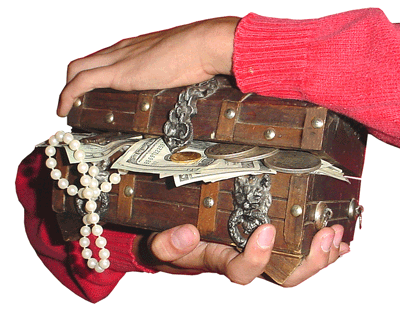
It’s important to realize that we can’t shield ourselves from every problem that could possibly arise. Nor should we hoard so much money that we think we are impervious to disaster. Some of our greatest blessings have come when we’ve had to depend on others because our own resources were exhausted.
Keep Your Money in the Bank in Perspective
If you can create an emergency fund account and keep it all in proper perspective, emergencies will seem to occur less often and will be far less stressful when they do.
Additionally, if you have started to build the emergency fund and disaster does strike before your accounts are fully funded, you are still protected. You can shift money from one account to another to cover the current financial emergency need.
Like us, you may have months when your income drops drastically and you don’t meet your emergency savings goals. Don’t sweat it. Keep the emergency fund goal in sight, and if additional money comes in, then catch up. If you can’t meet your monthly emergency savings goal, just save what you can.
Remember, a mountain is climbed one step at a time, and the same is true of building an emergency fund. Little by little, you’ll see the emergency fund grow. Being prepared and diligent will give you a bona fide sense of financial security.
Live Video: Emergency Fund Real Examples
In April of 2018, we recorded this live video on Facebook and YouTube. We discussed Emergency Fund ideas with hundreds of followers. We also answered their questions about auto insurance coverages, umbrella insurance policies, health care deductibles, and much more.
Money-Saving Tip: Quoting your auto insurance every 2 or 3 years can save you some cash. We like using the website Gabi – it takes a few minutes to enter your info and they’ll give you quotes from multiple insurance companies. It’s super easy and saves you time and money.
More Resources for Saving Money
Check out our blog on Windfalls, when chunks of money show up!
We also have a great Money Saving Tip page for Saving Money!
And this link has a category role page with several more pages that fit under the budgeting category for you to be inspired!
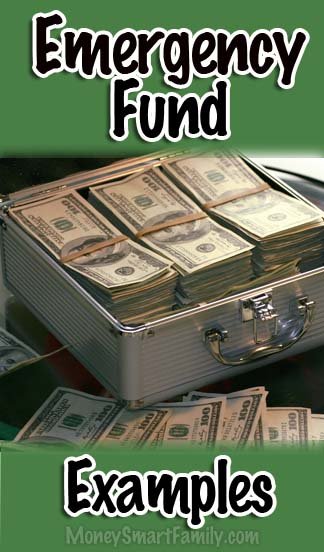
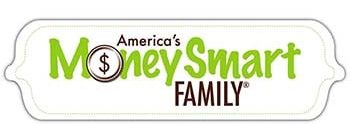
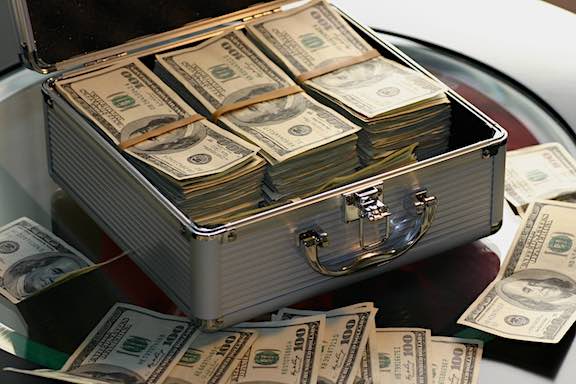
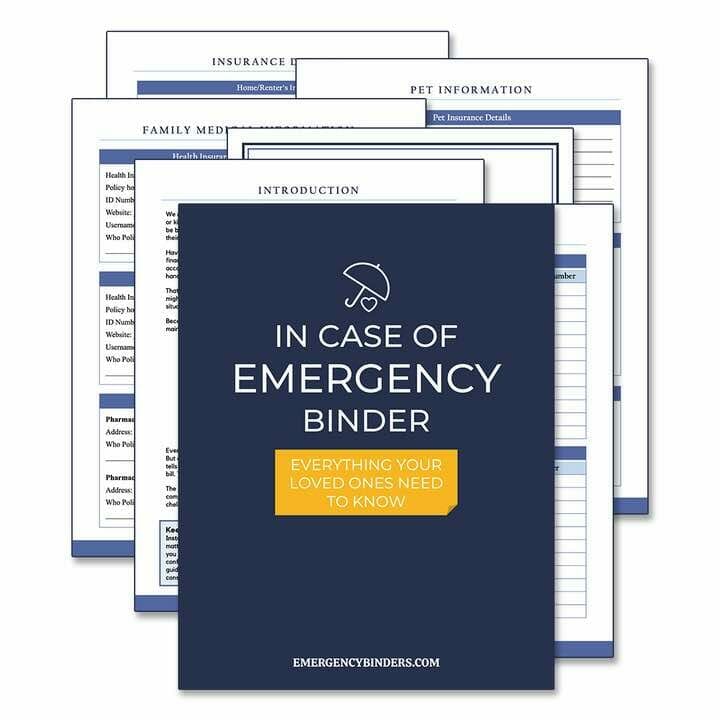
We have started funding our emergency funds and, although not fully funded, when something comes up it a lot less stressful. Thanks for your suggestions.
Brenda thanks for sharing your success. Way to go. You’ll have it fully funded soon and be able to rest easy … and enjoy a little bit of excess money each month.
We are completely debt free, including the house. We live on my husband’s income only. We have four girls, ages 14 to 18, living with us, with the oldest completing her bachelor’s degree in history online for cash, while living at home and working 2 part-time jobs. We have each of your emergency envelopes established but none fully funded other than the medical emergency through HSA and a budget envelope. We are contributing a specific dollar amount to each daughter for college and are currently contributing toward our second daughter’s education. According to your article, it took you several years to fully fund your emergency funds. Did you contribute to one more than the other? Did you prioritize? I would appreciate any suggestions you may have. Thank you!!
We took any excess money we had and divided it into predetermined percentages for emergency travel, emergency medical and emergency unemployment. Once the accounts were full with our targeted amounts, we used the money for house projects and retirement.
Great article! I remember seeing you mention these categories on a video with the Dollar Stretcher guy. We implemented it and love the peace of mind. Having it separated in different categories makes a lot of sense instead of one big “pot” of money.
Glad this was helpful for you. You’re right, having a categorized emergency fund does give you confidence, peace and security.